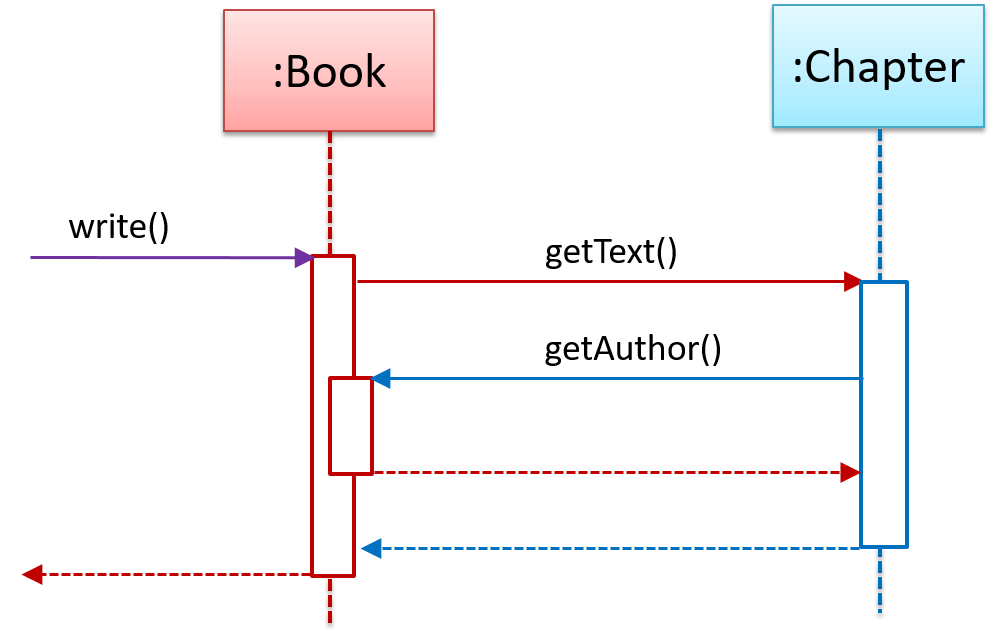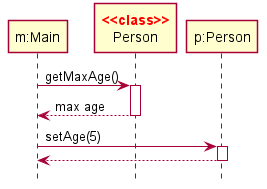Sequence Diagrams
# Sequence Diagrams
A sequence diagram captures the interactions between multiple objects for a given scenario.
Notation:

# Common notation errors
Activation bar too long: The activation bar of a method cannot start before the method call arrives and a method cannot remain active after the method has returned. In the two sequence diagrams below, the one on the left commits this error because the activation bar starts before the method Foo#xyz() is called and remains active after the method returns.

Broken activation bar: The activation bar should remain unbroken from the point the method is called until the method returns. In the two sequence diagrams below, the one on the left commits this error because the activation bar for the method Foo#abc() is not contiguous, but appears as two pieces instead.

# Object Creation
Notation:

- The arrow that represents the constructor arrives at the side of the box representing the instance.
- The activation bar represents the period the constructor is active.
# Object Deletion
UML uses an X at the end of the lifeline of an object to show its deletion.
Although object deletion is not that important in languages such as Java that support automatic memory management, you can still show object deletion in UML diagrams to indicate the point at which the object ceases to be used.
Notation:

# Loops
Notation:
The Player calls the mark x,y command or clear x y command repeatedly until the game is won or lost.

# Self Invocation
UML can show a method of an object calling another of its own methods.
Notation:
 In this variation, the
In this variation, the Book#write() method is calling the Chapter#getText() method which in turn does a call back by calling the getAuthor() method of the calling object.

# Alternative Paths
UML uses alt frames to indicate alternative paths.
Notation:

# Calls to Static Methods
Method calls to static (i.e., class-level) methods are received by the class itself, not an instance of that class. You can use <<class>> to show that a participant is the class itself.
In this example, m calls the static method Person.getMaxAge() and also the setAge() method of a Person object p.
